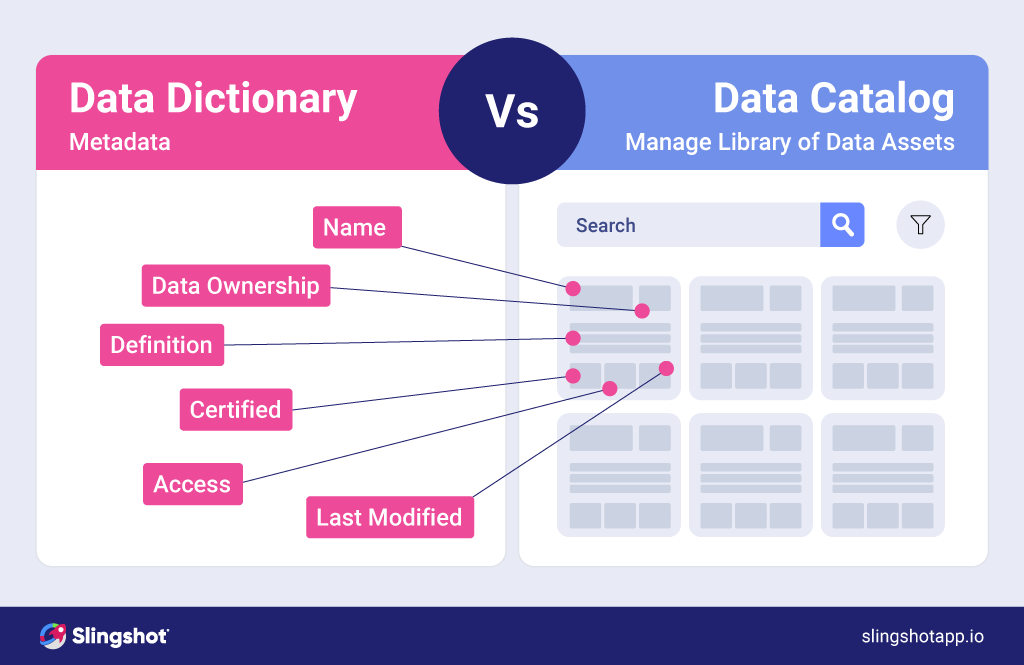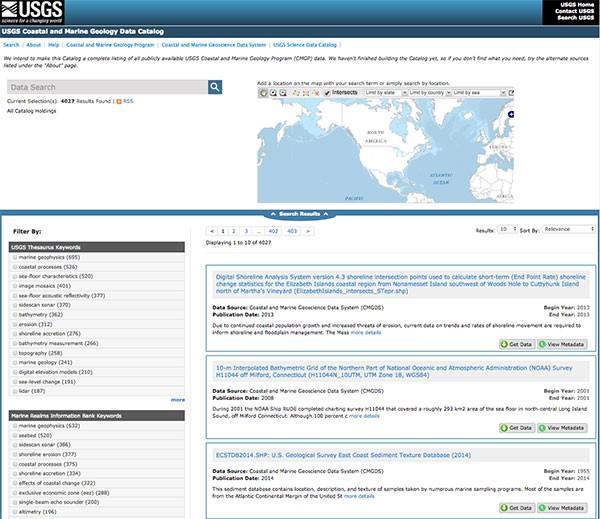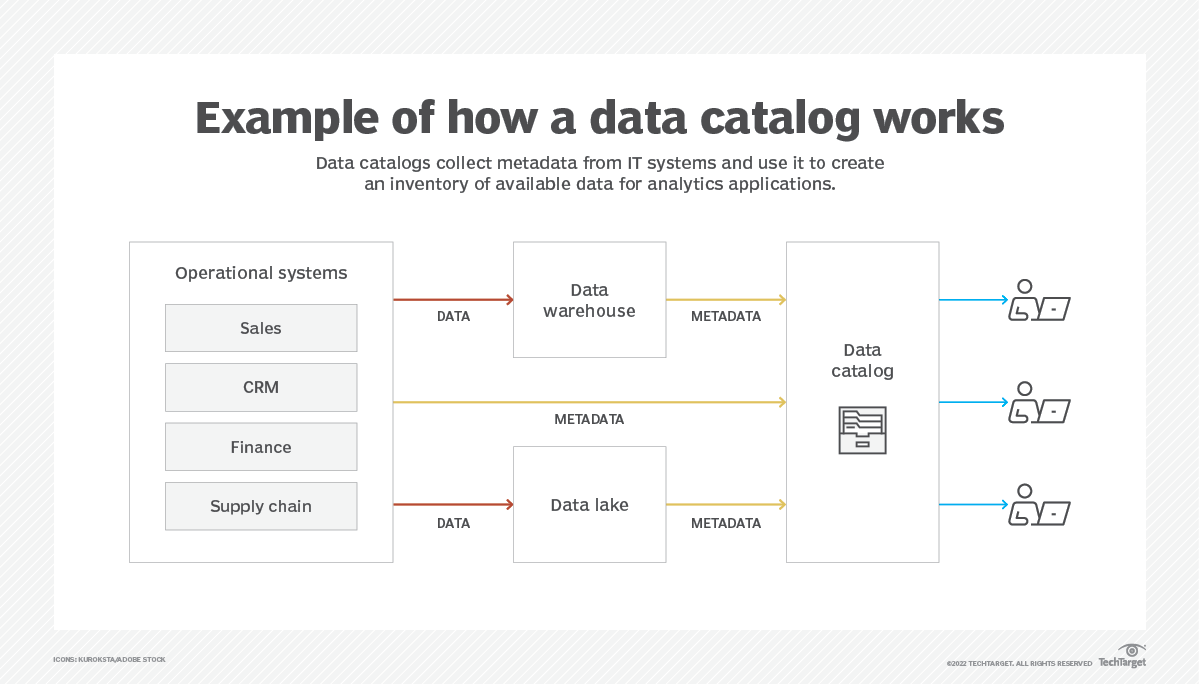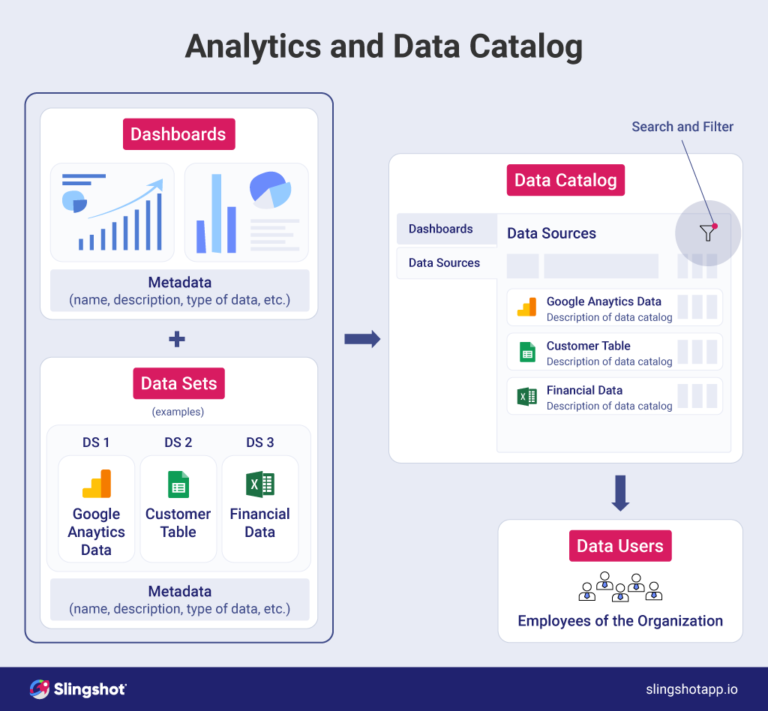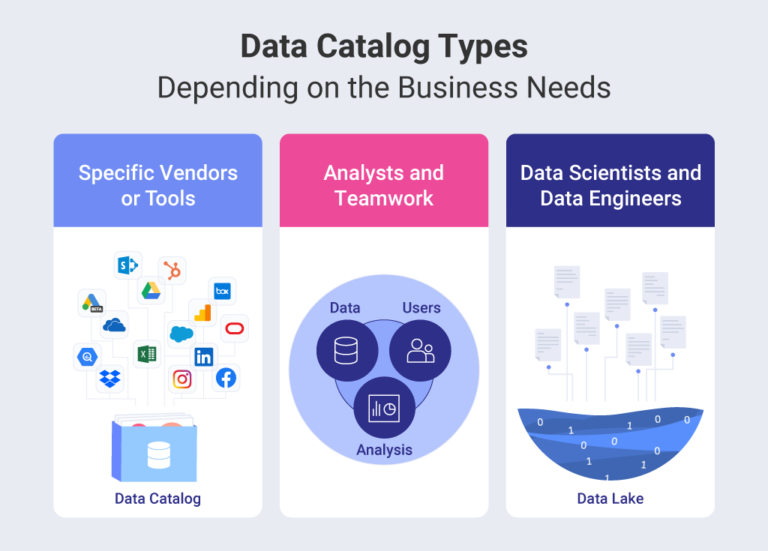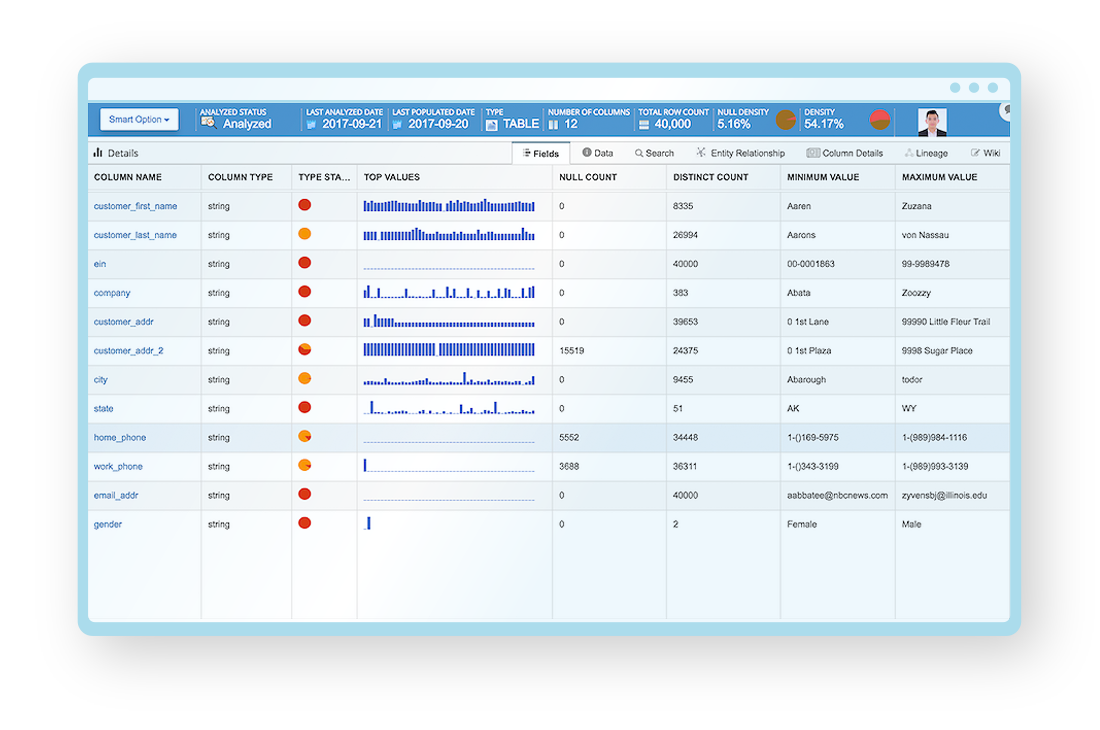Database Catalog Example
Database Catalog Example - A data catalog is a detailed inventory of all data assets in an organization, designed to help data professionals quickly find the most appropriate data for any analytical or. The source and current location of the data 2. What is a data catalog? Data catalogs help you organize and evaluate information about your data, including: A database catalog of a database instance consists of metadata in which definitions of database objects such as base tables, views (virtual tables), synonyms, value ranges, indexes, users, and user groups are stored. A good data catalog should provide users with the ability to quickly identify what types of data are available within the organization, where they are located, and who owns. It provides a comprehensive view of all data assets in an organization, including. Replace the catalog_uri, warehouse, and token variables with your values from sections 2 and 3 respectively. Earch and data discovery functions. Data catalogs are similar to business directories in that they help users find business terms or connect to business glossaries. The goal is to turn scattered data. Accelerating insights, data projects, and ai. But what makes a data catalogue robust and efficient? It’s a central repository that stores metadata about data assets, such as data sources, data. The catalog storage access command creates an alias for accessing remote storage on ibm cloud object storage or amazon simple storage service (s3) directly with the ingest,. Here are four key ways a data catalog drives business value: In the python notebook above, you: What is a data catalog? Roughly there are 4 main categories of data catalogs. What is a data catalog? Much like a library catalog that indexes books, a data catalog indexes an organization’s data assets and key information about them. What is a data catalog? Here are four key ways a data catalog drives business value: But what makes a data catalogue robust and efficient? A good data catalog should provide users with the ability to quickly identify what. Creating a proficient data catalog template involves considering several key factors. The goal is to turn scattered data. In the python notebook above, you: It provides a comprehensive view of all data assets in an organization, including. The source and current location of the data 2. [1][2] it is an architecture product that documents the database's content and data quality. A modern data catalog is a tool used to organize, manage, and discover data assets within an organization. Data catalogs help you organize and evaluate information about your data, including: But what makes a data catalogue robust and efficient? Earch and data discovery functions. The goal is to turn scattered data. A data catalog is a detailed inventory of all data assets in an organization, designed to help data professionals quickly find the most appropriate data for any analytical or. Roughly there are 4 main categories of data catalogs. A data catalog is a central inventory of organizational data. It provides a comprehensive view. A data catalog is a central inventory of organizational data. A database catalog of a database instance consists of metadata in which definitions of database objects such as base tables, views (virtual tables), synonyms, value ranges, indexes, users, and user groups are stored. [1][2] it is an architecture product that documents the database's content and data quality. In this article,. However, these repositories go beyond. It provides a comprehensive view of all data assets in an organization, including. In the python notebook above, you: A data catalog is a detailed inventory of all data assets in an organization, designed to help data professionals quickly find the most appropriate data for any analytical or. The goal is to turn scattered data. It provides a comprehensive view of all data assets in an organization, including. What is a data catalog? But what makes a data catalogue robust and efficient? A data catalog helps data users identify which data assets are available and provides relevant context about that data, allowing them to assess the data for use. The source and current location of. A data catalog is a detailed inventory of all data assets in an organization, designed to help data professionals quickly find the most appropriate data for any analytical or. A database catalog of a database instance consists of metadata in which definitions of database objects such as base tables, views (virtual tables), synonyms, value ranges, indexes, users, and user groups. What is a data catalog? A data catalog helps data users identify which data assets are available and provides relevant context about that data, allowing them to assess the data for use. The catalog storage access command creates an alias for accessing remote storage on ibm cloud object storage or amazon simple storage service (s3) directly with the ingest,. But. But what makes a data catalogue robust and efficient? It’s a central repository that stores metadata about data assets, such as data sources, data. Replace the catalog_uri, warehouse, and token variables with your values from sections 2 and 3 respectively. Accelerating insights, data projects, and ai. It provides a comprehensive view of all data assets in an organization, including. However, these repositories go beyond. Let’s explore these in depth, along with the relevant use cases and data catalog capabilities that support them. A data catalog is a central inventory of organizational data. What's more, the high value of metadata has made the data catalog the de facto control center for use cases like data governance, lineage, and data quality. What is a data catalog? Creating a proficient data catalog template involves considering several key factors. A database catalog of a database instance consists of metadata in which definitions of database objects such as base tables, views (virtual tables), synonyms, value ranges, indexes, users, and user groups are stored. Roughly there are 4 main categories of data catalogs. But what makes a data catalogue robust and efficient? Much like a library catalog that indexes books, a data catalog indexes an organization’s data assets and key information about them. Here are four key ways a data catalog drives business value: A modern data catalog is a tool used to organize, manage, and discover data assets within an organization. [1][2] it is an architecture product that documents the database's content and data quality. A good data catalog should provide users with the ability to quickly identify what types of data are available within the organization, where they are located, and who owns. Accelerating insights, data projects, and ai. Data catalogs help you organize and evaluate information about your data, including:What Is A Data Catalog & Why Do You Need One?
What Is a Data Catalog? DATAVERSITY
What is a Data Catalog? Uses, Benefits and Key Features TechTarget
What Is A Data Catalog & Why Do You Need One?
3 Reasons Why You Need a Data Catalog for Data Warehouse
What Is A Data Catalog & Why Do You Need One?
What is a data catalog? LightsOnData
Data Catalog PPT Presentation slides templates, Data, Catalog
Database schema for data catalog. Download Scientific Diagram
Build your data catalog quickly with this stepbystep guide
A Data Catalog Is A Detailed Inventory Of All Data Assets In An Organization, Designed To Help Data Professionals Quickly Find The Most Appropriate Data For Any Analytical Or.
Earch And Data Discovery Functions.
What Is A Data Catalog?
It’s A Central Repository That Stores Metadata About Data Assets, Such As Data Sources, Data.
Related Post:
